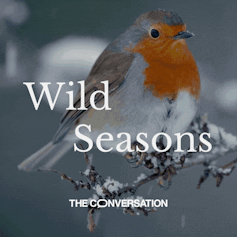Did January feel like March to you? Are February’s blooms and warm sunbursts more reminiscent of April? Topsy-turvy seasons, warped by rising temperatures, are an uncomfortable reminder of climate change.
Try to imagine the weather is critical to your ability to tell the time, your chances of finding food or whether your loved ones will know where and when you’ll be. Your discomfort at unseasonable weather may well feel less abstract, more urgent – desperate, even.
Animals, plants and all manner of living things in Earth’s middle latitudes are tuned to subtle seasonal rhythms that tell them when to rise from hibernation, flower or migrate. Global heating, caused by the burning of fossil fuels and the destruction of forests, is transforming these once dependable rhythms, making them violent and unpredictable. As a result, species are going out of sync with each other.
Wild Seasons, a new series from The Conversation, explores how our shifting climate is putting extra pressure on wildlife, from hibernating mammals waking early from their slumber to insects hatching when their food plants have been and gone. Beyond a certain limit, these mismatched life cycles could cause complex food webs to collapse. Perhaps new ones will emerge.
We’ll venture into the field with researchers to reveal the science that sheds light on nature’s calendar. Wild Seasons will follow creatures adjusting the timings of their seasonal behaviour – and reveal how countless species are adapting to weather a warming world, transforming our experience of the seasons in the process.

Do the seasons feel increasingly weird to you? You’re not alone. Climate change is distorting nature’s calendar, causing plants to flower early and animals to emerge at the wrong time.
This article is part of a series, Wild Seasons, on how the seasons are changing – and what they may eventually look like.

